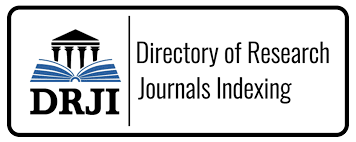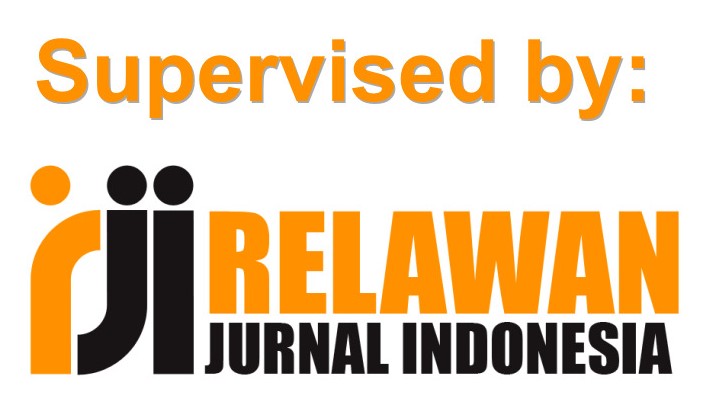Pengaruh Technology Acceptance Model (TAM) Terhadap Intensi Penggunaan Aplikasi Dana Pada Universitas PGRI Palembang
DOI:
https://doi.org/10.31851/jmwe.v21i4.18062Abstract
ABSTRAK
Penelitian ini bertujuan untuk menguji hipotesis Pengaruh Technology Acceptance Model (Tam) Terhadap Intensi Penggunaan Aplikasi Dana Di Universitas PGRI Palembang. Teknik pengambilan sampel menggunakan rumus slovin dengan jumlah sampel sebanyak 99 responden. Teknik analisis data memakai uji instrumen, uji asumsi klasik, uji multikolinieritas dan uji heteroskedasitas, analisis regresi linier berganda dan analisis koefisiensi determinasi serta uji hipotesis yaitu uji persial dan uji simultan.
Dari uji tersebut uji t variabel perceved easy of use (PEU) (X1) memiliki dampak signifikan terhadap Intensi Penggunaan (Y) pada aplikasi dana di universitas PGRI Palembang dengan nilai signifikan 0,000 < 0,05, variabel perceved usefulness (PU) (X2) berdampak terhadap Intensi Penggunaan (Y) pada aplikasi dana di universitas PGRI Palembang dengan nilai signifikan 0,000 < 0,05, variabel trust (X3) berdampak terhadap Intensi Penggunaan (Y) pada aplikasi dana di universitas PGRI Palembang dengan nilai signifikan 0,000 > 0,05, dan hasil uji F secara simultan terdapat nilai signifikan 0,000 < 0,05 dapat disimpulkan bahwa ada dampak yang signifikan secara simultan perceved easy of use (X1), perceved usefulness (X2) dan trust (X3) terhadap Intensi Penggunaan (Y) pada aplikasi dana di universitas PGRI Palembang.
Kata Kunci: perceved easy of use, perceved usefulness, trust dan intensi penggunaan.
ABSTRACT
This research aims to test the hypothesis of the influence of the Technology Acceptance Model (Tam) on Intentions to Use Fund Applications at PGRI University Palembang. The sampling technique used the Slovin formula with a sample size of 99 respondents. Data analysis techniques use instrument tests, namely validity and reliability, classical assumption tests, namely normality tests, multicollinearity tests and heteroscedasticity tests, multiple linear regression analysis, namely correlation coefficient analysis and coefficient of determination analysis and hypothesis tests, namely t tests and f tests. The test results partially concluded that the perceived ease of use (PEU) variable (X1) had a significant influence on the Intention to Use (Y) in fund applications at PGRI Palembang University with a significant value of 00,000 < 0.05, the perceived usefulness (PU) variable (X2) effect on Intention to Use (Y) on fund applications at PGRI Palembang university with a significant value of 0.000 < 0.05, the trust variable (X3) effect on Intention to Use (Y) on fund applications at PGRI Palembang university with a significant value of 0.000 < 0 .05, and the results of the F test simultaneously obtained a significant value of 0.000 < 0.05. It can be concluded that there is a significant influence simultaneously perceived ease of use (X1), perceived usefulness (X2) and trust (X3) on Intention to Use (Y) on funding applications at PGRI Palembang University.
Keywords : perceived ease of use, perceived usefulness, trust and intention to use
References
Hartono, Jogiyanto. 2007. Metodologi Penelitian Bisnis: Salah Kaprah Dan Pengalaman-Pengalaman. Edisi 2007. BPEE. Yogyakarta
Kotler, P., & Keller, K. L. (2016). Marketing Management Global Edition (Vol. 15E). Https://Doi.Org/10.1080/08911760903022556
Legi, D., Legi, D., & Saerang, R. T. (2020). The Analysis Of Technology Acceptance Model (TAM) On Intention To Use Of e-Money In Manado (Study On: Gopay, Ovo, Dana). Jurnal Riset Ekonomi, Manajemen, Bisnis Dan Akuntansi,8(Oktober),624–632. https://ejournal.unsrat.ac.id/index.php/emba/article/view/30951
Setiawan, A., Belianti, R. A., & Wulandari, T. (2023). Analisis Technology Acceptance Model terhadap perilaku penguna mobile banking di Surakarta. Journal of Economics and Business Research (JUEBIR), 2(1), 126–132. https://doi.org/10.22515/juebir.v2i1.6892
Sulistiyarini, S. (2012). Pengaruh Minat Individu Terhadap Penggunaan Mobile Banking: Model Kombinasi Technology Acceptance Model (TAM) Dan Theory Of Planned Behavior (TPB). Jurnal Ilmiah Mahasiswa FEB, 1(2), 1–20.
Sugiyono. (2019). Metode Penelitian Kuantitatif, Kualitatif Dan R&D (Issue April).
Sugiyono. (2018). Metode Penelitian Bisnis Pendekatan Kuantitatif,Kualitatif, Kombinasi, Dan R&D. Bandung:Alfabeta.
Wicaksono, S. R. (2022). Teori Dasar Technology Acceptance Model. Malang: Seribu Bintang
Willy Abdillah. (2018). Metode Penelitian Terpadu Sistem Informasi. Yogyakarta:Andi
Downloads
Published
Issue
Section
License
Copyright (c) 2025 Jurnal Media Wahana Ekonomika

This work is licensed under a Creative Commons Attribution-NonCommercial 4.0 International License.
The copyright of the received article shall be assigned to the publisher of the journal licensed under a Creative Commons Attribution-NonCommercial 4.0 International License in line with the license, authors and any users (readers and other researchers) are allowed to share and adapt the material only for non-commercial purposes. In addition, the material must be given appropriate credit, provided with a link to the license, and indicated if changes were made. If authors remix, transform or build upon the material, authors must distribute their contributions under the same license as the original.






















